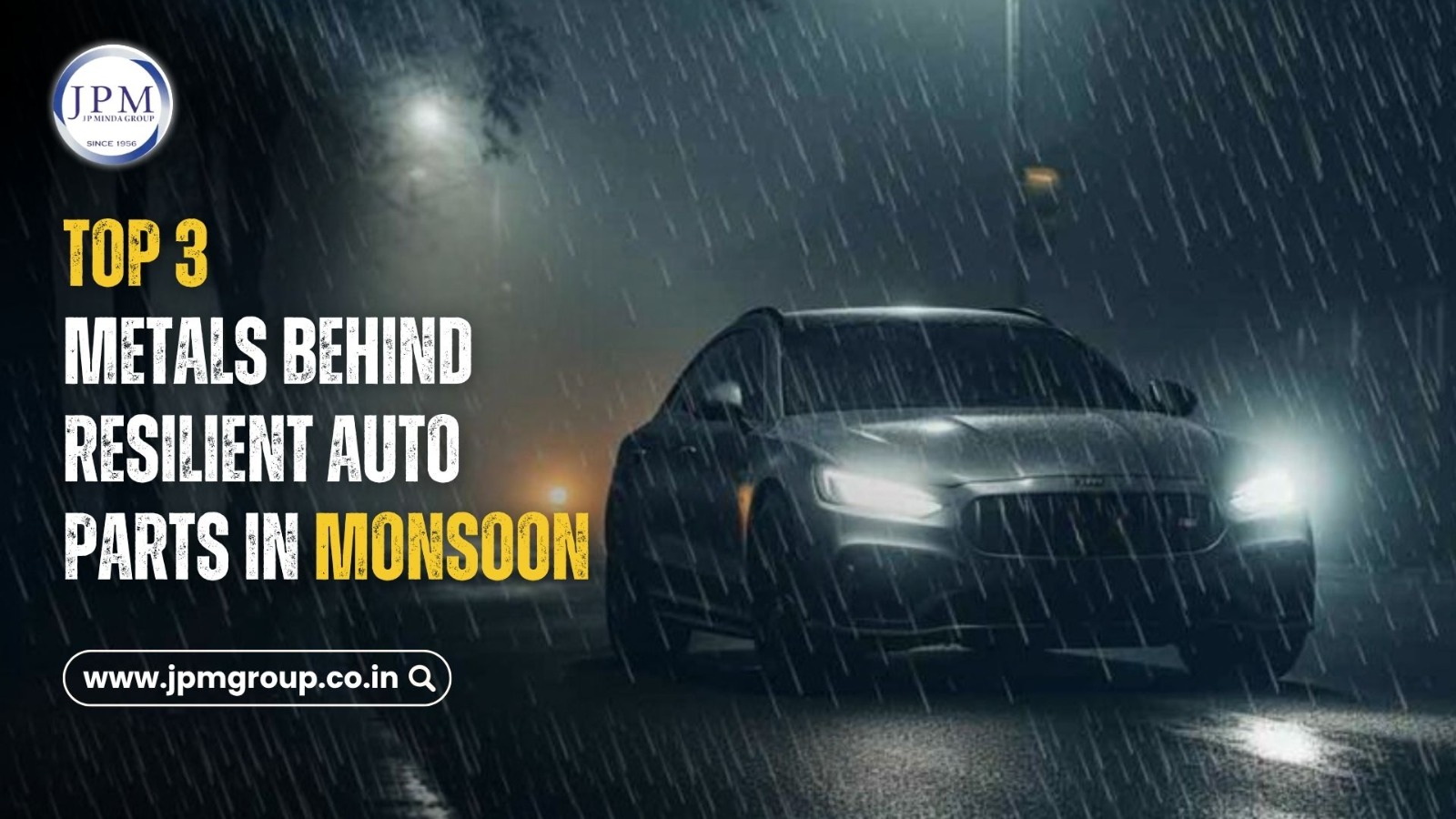Why do Monsoon need Resilient auto parts?
We all know how tough the monsoon season can be…Heavy rains, muddy roads, and constant moisture. For vehicles, this isn’t just an inconvenience. It’s a real challenge. And to surpass this challenge, your vehicles only ask for resilient auto parts.
Have you ever thought about it?
What makes sure things don’t wear out quickly in all that wet weather?
What keeps the resilient auto parts away from rusting?
It’s not just good design or regular servicing. A big part of the answer lies in the materials used to make these parts. Some special metals are chosen because they can handle moisture, last longer, and still keep the vehicle light and efficient. These smart choices help manufacturers build vehicles that stay strong, safe, and reliable no matter how bad the weather gets.
Let’s take a closer look at why the right materials make all the difference in monsoon-ready vehicles.
The Smart Metals used to make Resilient auto parts
During the Rainy season, vehicle components are constantly exposed to moisture, dirt, and temperature changes. To handle these challenges, OEM resilient auto parts manufacturers like JP Minda are using metals like zinc,
aluminum, and magnesium. These materials are known for their strength, resistance to corrosion, and lightweight nature, which makes a big difference in keeping vehicles running smoothly. By using them in critical parts, automakers are not only improving durability but also ensuring safer and more reliable performance throughout the rainy season.
Why are OEMs choosing these Metals for Resilient auto parts Manufacturing?
1. Zinc: Protect Resilient Auto Parts from Wear and Rust. Zinc plays an important role in manufacturing resilient auto parts to keep vehicles safe during the monsoon.
Galvanisation is mainly used as a protective layer to stop rust, especially on steel and iron parts. This is really helpful in wet and muddy conditions, where moisture and road salt can damage metal quickly. Zinc coatings are often used on parts like brakes, fasteners, and support structures where safety and strength matter most. When manufacturers use zinc to produce resilient auto parts, it shows they care about building vehicles that last longer and perform well, even in tough weather.
2. Aluminum: Lightweight Strength that Lasts in the Rainy Season.
Aluminum is widely used in auto parts because it’s light and doesn’t rust easily. It helps to manufacture resilient auto parts of radiators, engines, and the vehicle’s structure. Its light weight allows cars use less fuel and makes them easier to handle, especially on wet, slippery roads during heavy rain. Since aluminum doesn’t rust much, it also helps reduce repair costs and keeps vehicles running smoothly for longer. That’s why it’s a smart choice in modern automotive design.
3. Magnesium: Durable and Lightweight for Tough Monsoon Conditions
A very strong metal, magnesium is also one of the lightest metals utilized in automobiles. It’s mainly used in resilient auto parts like wheels and support structures. Because it’s so light, it helps improve fuel efficiency and makes the vehicle easier to handle, especially important during heavy rain. Magnesium also stands up well to moisture, so parts made from it don’t rust easily. This means fewer problems over time and longer-lasting performance of vehicles with resilient auto parts.
Why Do Metals Used in Vehicles Really Matter?
In today’s automotive world, building safe, efficient, and reliable vehicles starts with using the right materials. Metals like zinc, aluminum, and magnesium aren’t just technical choices; they’re smart decisions. These metals help protect parts from rust, reduce breakdowns, and make vehicles perform better, even in tough weather like the heavy rainy season.
OEM manufacturers known for high standards and forward thinking, like leading auto parts manufacturers such as JP Mind, use these metals to build stronger, longer-lasting, resilient auto parts. This approach not only improves safety and fuel efficiency but also keeps drivers satisfied by reducing the chances of part failure and costly repairs. For regions with challenging climates, such as long rainy seasons, using the right materials isn’t optional; it’s essential.
Conclusion;
In the automotive industry, using zinc, aluminum, and Magnesium in manufacturing resilient auto parts enhances vehicle performance in monsoon climates by providing corrosion resistance and reducing weight. In severe weather situations, this guarantee dependability and safety.
FAQ
1. Who is the largest auto parts supplier in India?
A. JP MINDA is considered the largest auto parts supplier in India.
2. How to avoid fungus in cars during the rainy season?
A. Keep the car dry, use the AC regularly, park in sunlight, and use moisture absorbers.
3. Which fluids should you check before the monsoon?
A. Engine oil, coolant, brake fluid, and windshield washer fluid.
4. Which company’s car spare parts are the cheapest in India?
A. Maruti Suzuki is known for being the most affordable and easily available spare parts.

